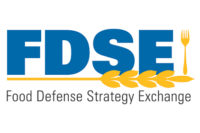Food crisis management begins now
Companies must employ a strategically sound plan for crisis management and communication on processes and protocol.

As consumers continue to educate themselves about the brands they support, their curiosity about the people, processes and sustainability behind them will drive new conversations to the forefront. One conversation brands need to have now is the one surrounding food crisis management.
Included in the cost of doing business is a food safety communications plan that ultimately rises above industry standards. Companies must employ a strategically sound plan for crisis management and communication on processes and protocol.
The weight of food crisis management
Pathogens traveling into food plants, the inability to meet increased consumer demand, false claims and disgruntled employees can all act as a food crisis catalyst, affecting the brand’s reputation. By fine-tuning a food crisis strategy, brands can continue to protect their public profile while helping to instill trust between the brand and its consumers.
Rather than play catch-up when a crisis strikes, here are four ways to maximize your efforts now:
1. Establish a crisis management plan.
The optimal time to plan for a crisis is before your world is rocked by one. Establish a perspective now that may not be available during turbulent times.
A food crisis can expose your company to time-sensitive pressures. During this time, consider everything from who to contact in times of need, when and how to do so, and most importantly, what to communicate. Emotion has no place in times of crisis. Management plans need to include ways for the team to continue to execute while also continuing to care for the brand in a calm and methodical way.
2. Identify a crisis management team.
Identify who needs to be in your inner circle when a food crisis hits. An intimate group of team members should play an integral role in molding the messaging. This inner circle needs to include a C-suite, head of quality control or manufacturing, human resources, legal staff and marketing head, as well as a marketing or agency partner.
This high level team should help develop skeleton crisis messaging that can be supplemented and used to jumpstart final messaging. In the heat of a crisis, allow this established team to simply execute the plan and communicate what has already been vetted and aligns with the brand’s standards.
3. Solidify the messaging.
From receptionists to the CEO, a crisis management plan must also outline messaging that can be shared if those outside the specified crisis management team are approached by unannounced consumers or media. To protect your company’s position, identify who on the team will be public facing.
Every team member who has the potential to come in contact with the media needs to be considered and anticipated. Because there is no such thing as “off the record,” messaging must be carefully crafted. This messaging should give all public facing touch points a concise way to state the facts. Oftentimes, if the media wants a story and can’t get it, they’ll find it in someone else, and that someone will likely not deliver the message, sentiments and tone you would like if not guided by strategic crisis communication.
On that same note, if the concern begins on social media, respond to consumers via the medium by which they reach out to you. Then, manage the conversation privately before it has the opportunity to expand beyond the realm of social media.
4. Strengthen your support team.
A deep knowledge of the industry, social media and a solid track record in times of crisis can distinguish one advertising agency or PR partner from another. A food crisis can range from a disgruntled consumer expressing their dislike for your brand on social media to a complete product recall or worse.
With a vigilant team behind a food brand, consumers should feel heard, taken care of and respected. Now is the time to build your relationship with shoppers, distributors, manufacturers and those who play a part in getting a food brand in the hands of consumers.
Looking for a reprint of this article?
From high-res PDFs to custom plaques, order your copy today!








